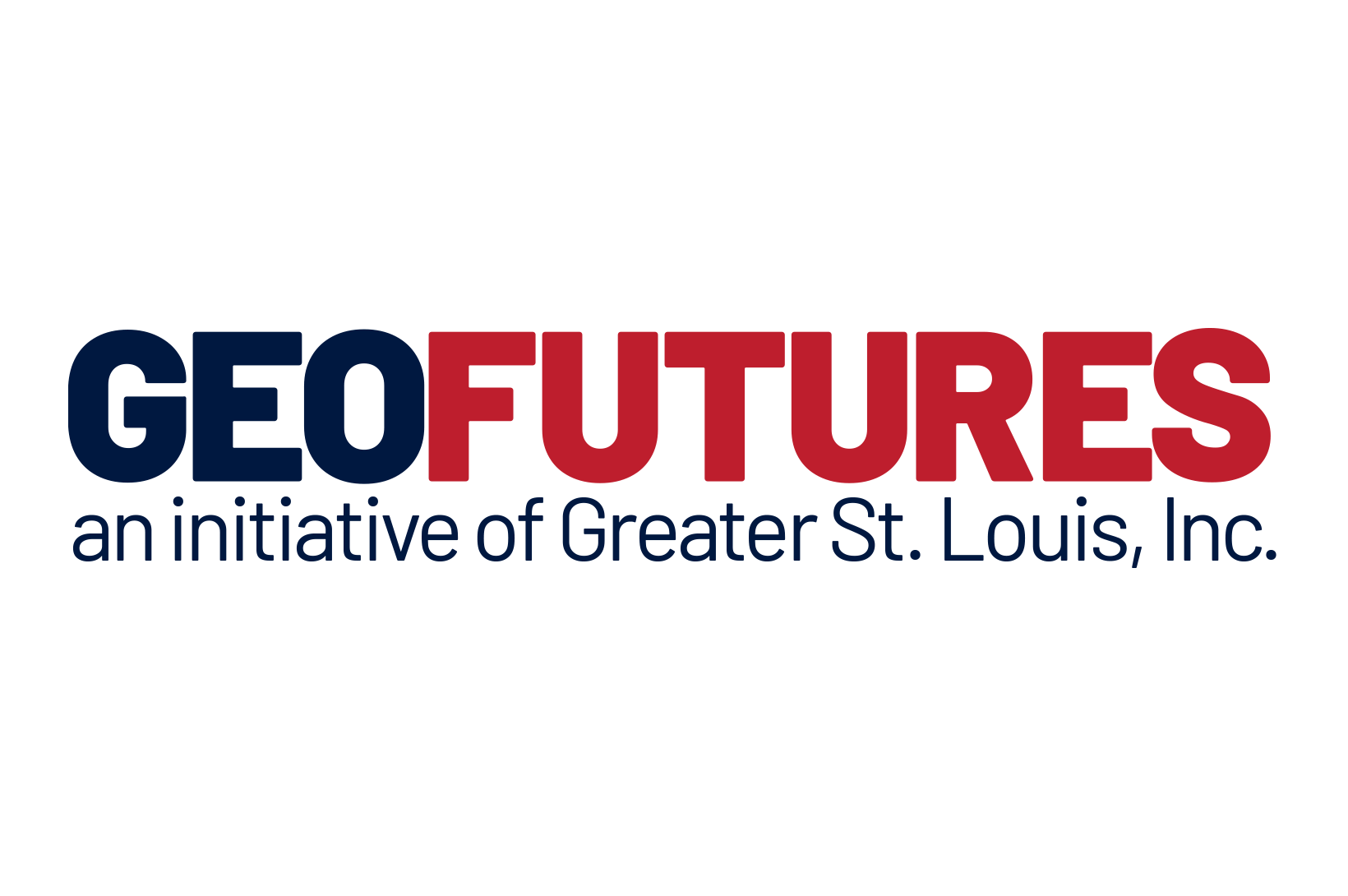
Key Takeaways from New GeoFutures Strategic Roadmap
- Sets a new “North Star” of positioning St. Louis as a world leader in geospatial innovation
- Lays out strategic priorities focused on talent, innovation, growth, and championing St. Louis
- Identifies St. Louis’ competitive advantages and opportunities, including geospatial AI
- Highlights need for dedicated “backbone” organization to lead the geospatial ecosystem
ST. LOUIS – GeoFutures, the strategic initiative led by Greater St. Louis, Inc. to advance the St. Louis region’s geospatial technology sector, today launched a new Strategic Roadmap to guide the geospatial ecosystem into the future. The new Strategic Roadmap expressly calls for the creation of a new organization to coordinate implementation of the new strategy.
“Over the past five years, we’ve laid a strong foundation for the geospatial ecosystem here in St. Louis,” said Dustin Allison, GSL’s Interim CEO. “We’ve seen tremendous growth that has established St. Louis as one of the country’s true centers for geospatial technology.
“With that foundation laid and with the opening of NGA St. Louis serving as a pivotal inflection point in the development of our geospatial sector, we are charting the course for the next phase of growth with a new GeoFutures Strategic Roadmap.”
A NEW NORTH STAR
GeoFutures launched its original Strategic Roadmap in 2020 to capitalize on the opportunity presented by the decision by NGA to build its new state-of-the-art headquarters in North St. Louis. The original plan has helped guide the growth of the geospatial sector for the past five years.
The new Strategic Roadmap builds on that foundation and sets a new “North Star” goal for the ecosystem: To position metro St. Louis as a world leader in geospatial innovation by solving major economic, societal, and national security challenges; growing businesses and jobs; fostering a thriving system of breakthrough technologies and talent; and ensuring that economic growth benefits communities across the bi-state region.
Strategic Priorities + Multipliers
To reach that North Star goal, GeoFutures developed four new strategic priorities. These strategic priorities define the high-level areas of focus for the ecosystem:
- Talent. Develop workforce pathways the meet current and future geospatial needs.
- Innovation. Accelerate innovation through research and development to drive and respond to market demand.
- Growth. Strengthen entrepreneurship and business growth through access to capital, customers, and connections.
- Champion St. Louis. Build, brand, and showcase St. Louis as a global geospatial leader.
In addition to the four new strategic priorities, the new Roadmap calls out three “multipliers” – competitive advantages and opportunities for St. Louis that reinforce the region’s unique value proposition and provide a compelling rationale for investment, partnership, and sustained growth of St. Louis’ geospatial ecosystem. These multipliers include:
- North St. Louis. Invest in the community and support development around the NGA site.
- Geospatial Artificial Intelligence, or GeoAI. Capitalize on the emergence of high-growth geospatial AI technologies and market. (GeoAI is the integration of artificial intelligence and machine learning with geospatial data.)
- Clusters of Strength. Leverage St. Louis industries, including agtech, life sciences, advanced manufacturing, and national security.
A DEDICATED “BACKBONE” FOR THE GEOSPATIAL ECOSYSTEM
A core recommendation in the new strategy is the creation of a new organization to carry on and scale the work of the GeoFutures Initiative. Through a summer-long planning process, stakeholders determined that an independent organization would be needed to coordinate all of the efforts laid out in the new strategic roadmap.
“Our stakeholders made their feelings clear --- the geospatial ecosystem has grown and reached a level of maturity that it needs a focused organization to support its continued growth,” Mark Munsell, the leader of the GeoFutures Initiative said. “We envision creating something similar to 39North or BioSTL, which work to grow St. Louis’ agtech and life sciences clusters, respectively.”
This proposed organization would serve a diverse set of stakeholders in the ecosystem, including geospatial startups and entrepreneurs, established companies, academic and research institutions, government agencies and policymakers, investors and funders, workforce and talent, community organizations and residents, and economic development and aligned industry cluster organizations.
BUILDING ON FIVE YEARS OF GEOSPATIAL GROWTH
Highlights of the growth of St. Louis’ geospatial ecosystem over the past five years include the establishment of the Taylor Geospatial Institute and the Taylor Geospatial Engine; the launch of Project Connect; the creation of workforce development programs and curricula to help grow the region’s talent pipeline; the growth of the Downtown North innovation district as a hub for established geospatial companies and startups; and more.
National Hub for Defense Tech
The St. Louis region’s continued efforts to grow the geospatial sector are part of a larger effort to position the region as the country’s center for defense technology. Last year, with the support of U.S. Senator Eric Schmitt, Congress passed the National Geospatial Innovation Hub Advancement Act, which includes a pilot program that would potentially house a defense tech hub at NGA St. Louis.
Media Contact: Tony Wyche | 314-398-9991 | Tony@GreaterSTLinc.com
